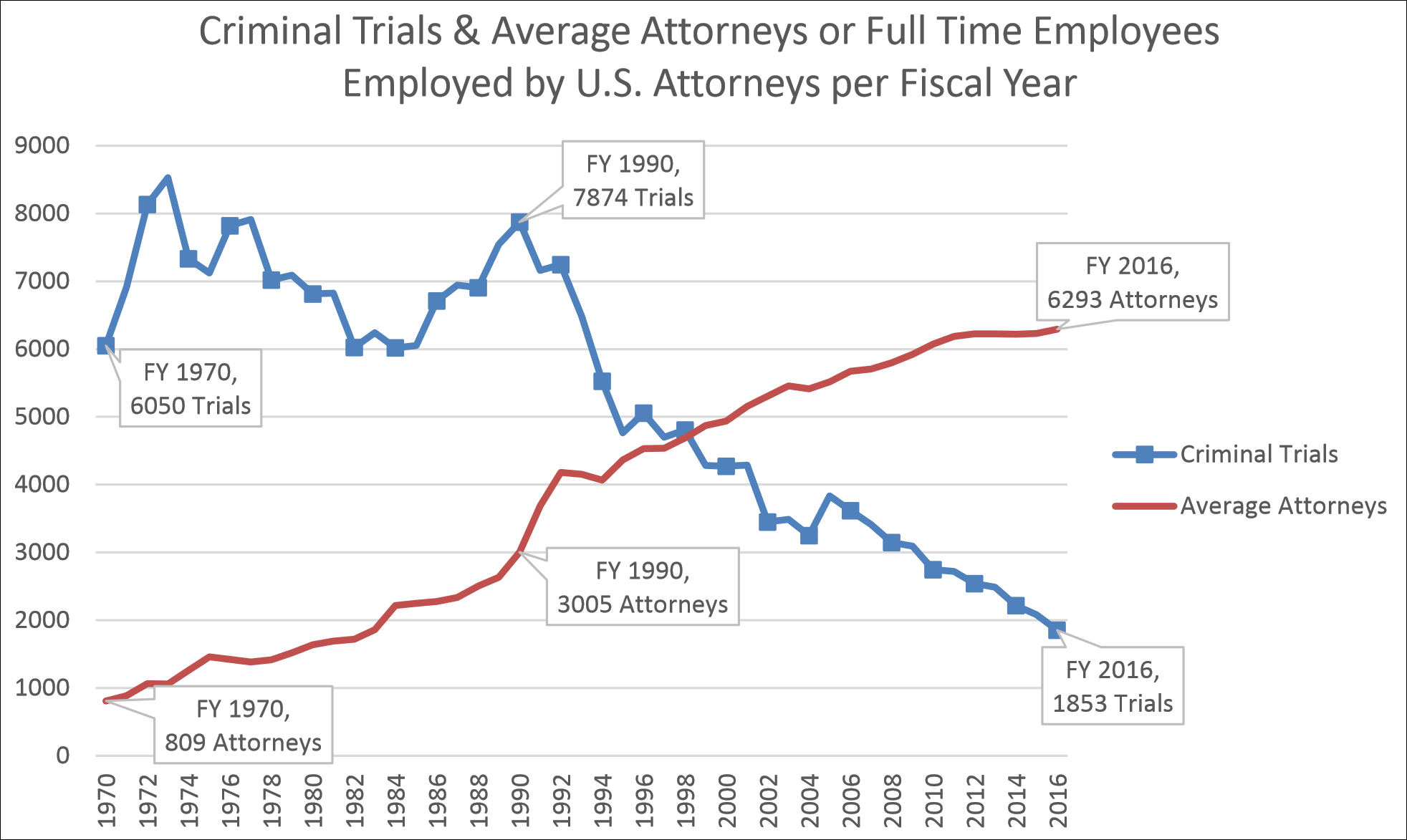Here’s something kind of awesome. Wonkblog’s Christopher Ingraham points us to a district court opinion that justifies its conclusion with a chart drawn in Excel:

Is this common? I don’t think I’ve ever seen a chart in a judicial opinion before, but then, I don’t read a whole lot of judicial opinions. In any case, if this is a trend, I heartily approve.
In case you’re wondering, Judge Joseph Goodwin used this chart to demonstrate that US attorneys are lazy bastards who make plea deals for everything and barely ever do the work of actually bringing someone to trial: “In FY 1973, each federal prosecutor handled over eight criminal trials on average. By FY 2016, the average number of criminal trials handled by each federal prosecutor plummeted to 0.29 trials.”
For that reason, he rejected a plea deal in the case at hand. US attorneys are hardly overworked, he said, so let’s have a trial:
The law is the law, and I am satisfied that enforcing the law through public adjudications focuses attention on the heroin and opioid crisis….A jury trial tells a story….Moreover, the attendant media attention that a jury trial occasions communicates to the community that such conduct is unlawful and that the law is upheld and enforced.
….The secrecy surrounding plea bargains in heroin and opioid cases frequently undermines respect for the law and deterrence of crime. The bright light of the jury trial deters crime, enhances respect for the law, educates the public, and reinforces their sense of safety much more than a contract entered into in the shadows of a private meeting in the prosecutor’s office.
For the reasons stated, I REJECT the plea agreement.
Does this make sense? Will it be upheld if it’s appealed? Beats me. But I love the chart. Good job, judge.

















